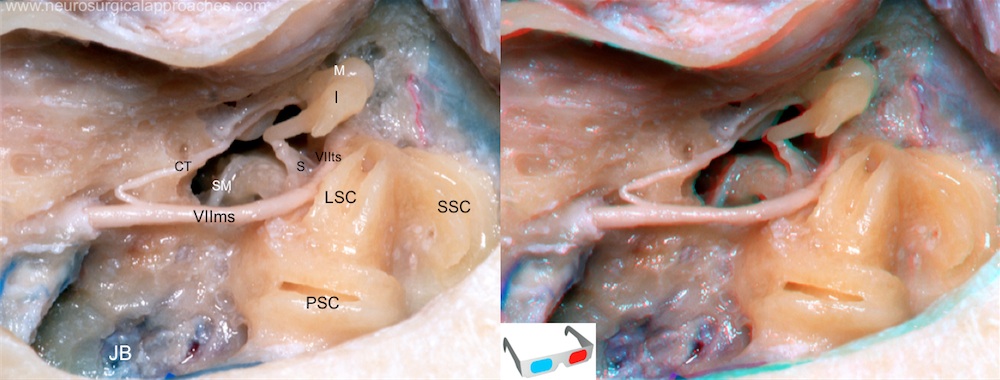Superior semicircular canal
The superior semicircular canal (anterior semicircular canal) is a part of the vestibular system and detects rotations of the head in around the lateral axis, or in other words rotation in the sagittal plane. This occurs, for example, when nodding your head.
It is 15 to 20 mm in length, is vertical in direction, and is placed transversely to the long axis of the petrous part of the temporal bone, on the anterior surface of which its arch forms a round projection. As part of the vestibular system it detects rotation of the head around a rostral-caudal (anterior-posterior) axis. It describes about two-thirds of a circle. Its lateral extremity is ampullated, and opens into the upper part of the vestibule; the opposite end joins with the upper part of the posterior canal to form the crus commune, which opens into the upper and medial part of the vestibule.
CT: Chorda tympani; I: Incus; JB: Jugular bulb; LSC: Lateral semicircular canal; M: Malleus; PSC: Posterior semicircular canal; S: Stapes; SM: Stapedius muscle; SSC: Superior semicircular canal; VIIms: mastoid segment of VII cranial nerve; VIIts: tympanic segment of VII cranial nerve.
